Suspicious Twitter accounts claiming to be Armenians from Turkey spur nationalist rhetoric
Several tweets went viral and were
Suspicious Twitter accounts claiming to be Armenians from Turkey spur nationalist rhetoric
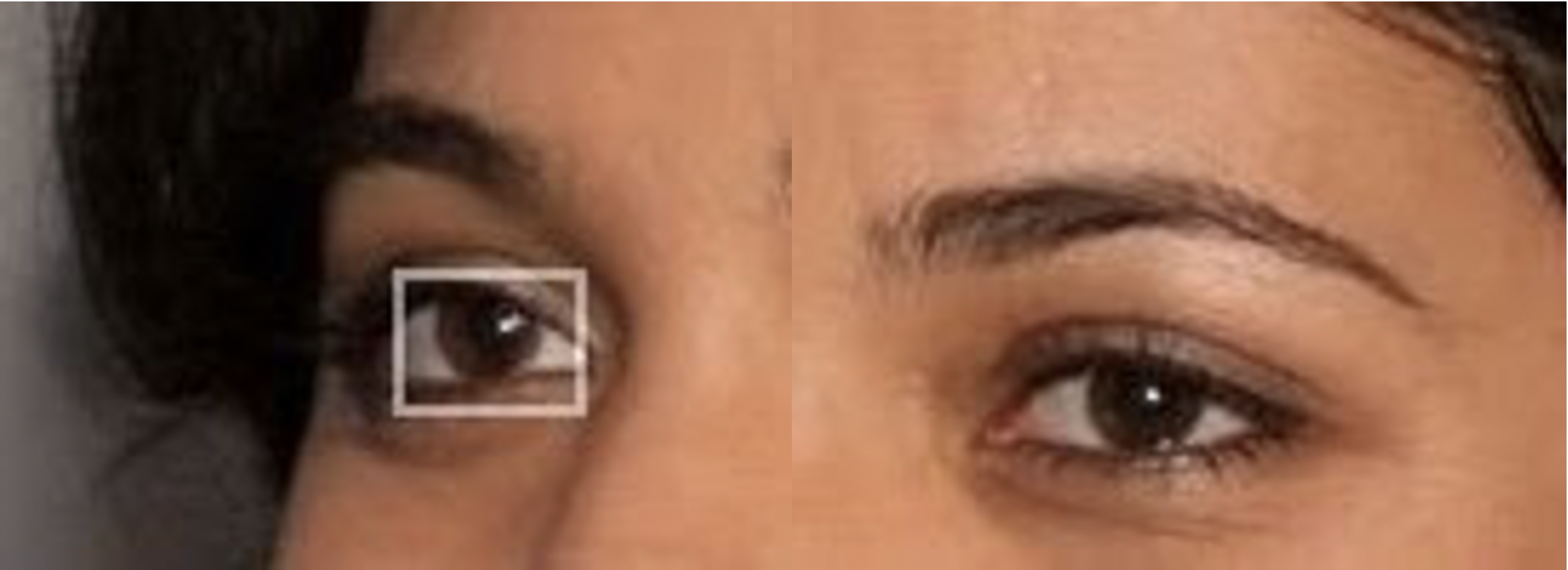
Several tweets went viral and were picked up by Turkish nationalist media outlets — but some Twitter users aren’t buying it
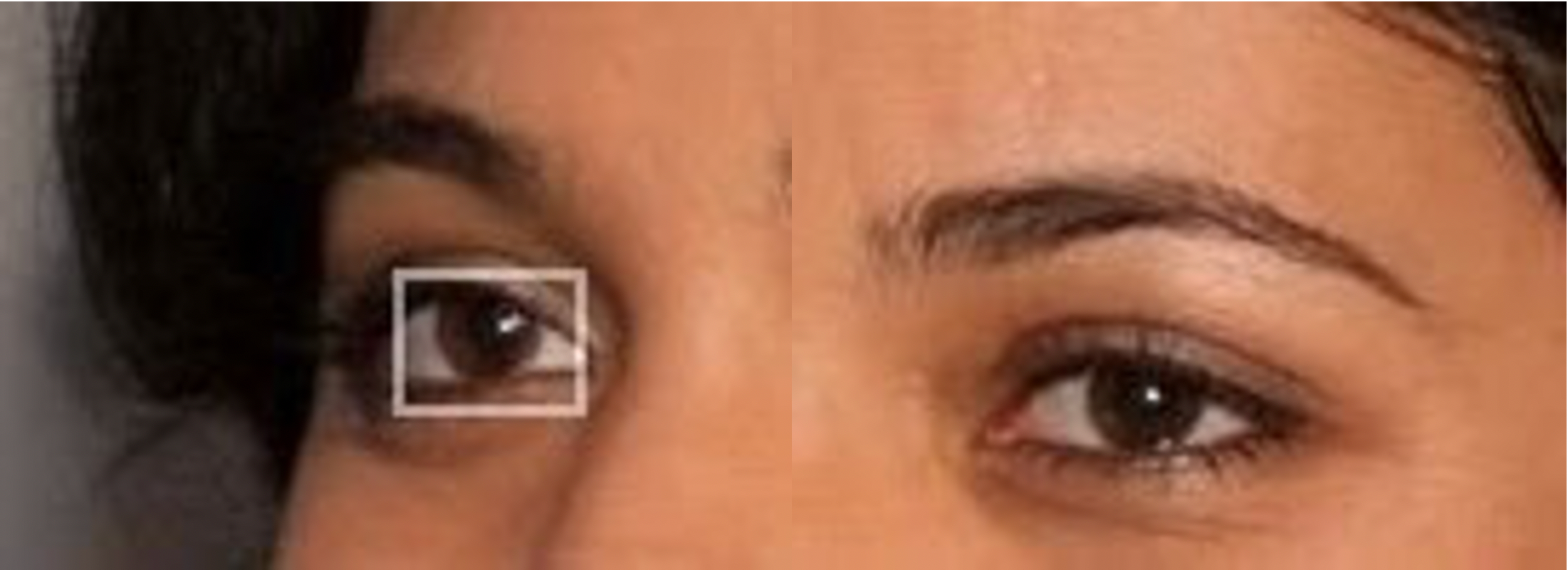
Twitter users are calling out three Twitter accounts downplaying racism against Armenians in Turkey. The accounts were created during the recent reignition of the armed conflict in Nagorno-Karabakh, which has spurred hyper-nationalist rhetoric online and subsequent anxiety among ethnic Armenians in Turkey.
But some Twitter users saw have raised serious questions about the accounts. The suspected inauthentic accounts identified as ethnically Armenian and supposedly from Turkey, but espoused Turkish nationalist rhetoric. While the accounts claimed academic titles at various institutions in an attempt to gain legitimacy, ultimately, their academic identities, combined with a lack of other online presence, only served to attract more suspicion.
Nevertheless, these accounts were still able to go viral and skew online rhetoric, serving as examples of “model minorities” profiles for Turkish nationalist newspapers and commentators reporting on them uncritically.
“Ahcik Arat”
The first account, Ahcik Arat, has cultivated 12,200 followers in just eight days and allegedly belongs to a psychology professor at the University of Madrid. The account tweets in fluent Turkish and uses the last name, “Arat.” Ahcik’s most popular tweet says that when the user was asked if she relocated to Spain to avoid racism in Turkey, she responds that on the contrary, she came to represent the country that raised an Armenian child to become a professor. Her content insinuates that she is an ethnic Armenian and proud supporter of Ataturk. In another popular tweet, she calls on Armenians to leave “Azerbaijan’s land” and end the war with Armenia.
Numerous Turkish accounts have responded to her most popular tweet with allegations that she’s a troll or fake account. Others have requested that users simply google her name and the University of Madrid. No such professor exists on the University of Madrid website.

Ahcik’s account displays several other distinguishable indicators of a fake account. Some users have pointed out that her Armenian first name is usually used as more of a pet name that means “girl” rather than a first name.
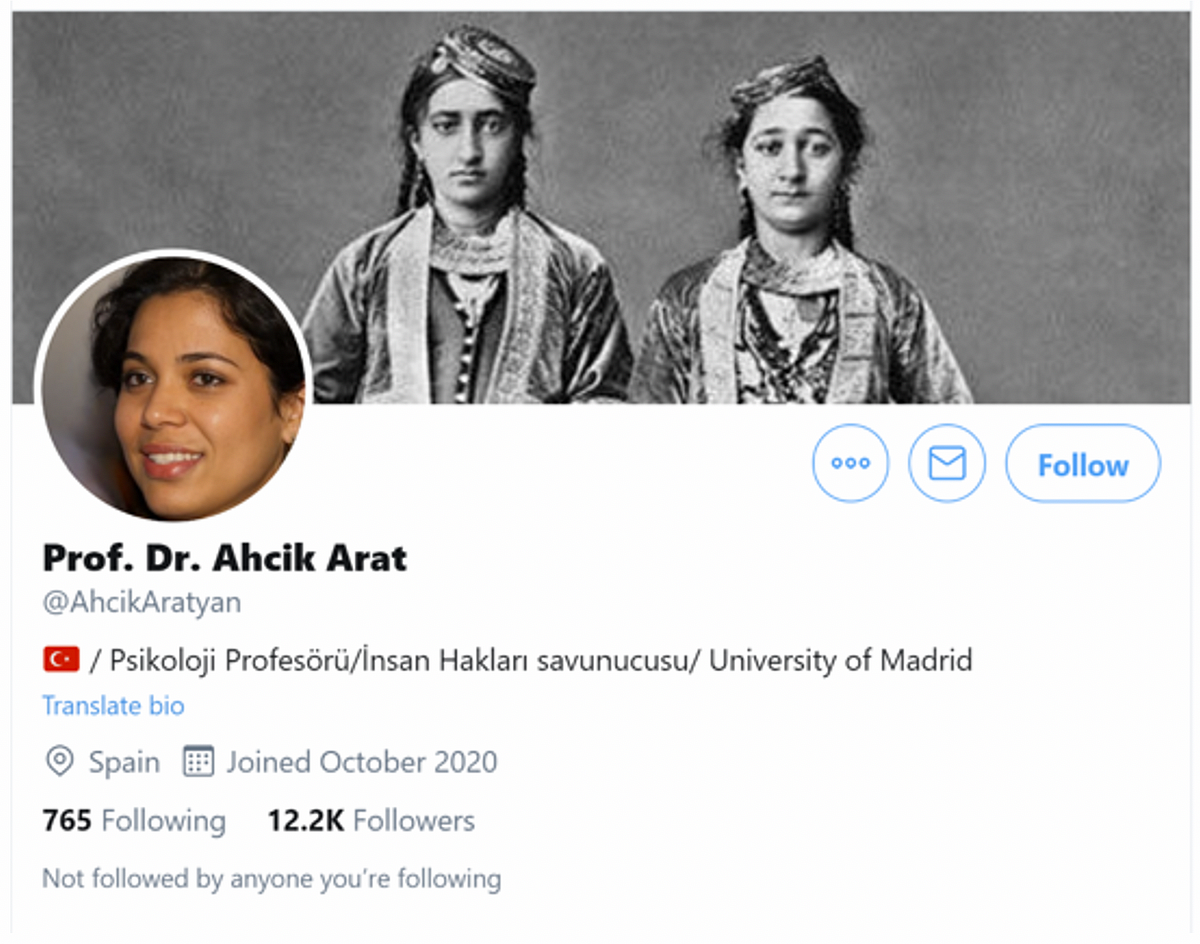
Other indicators are less prevalent. Her profile picture, for instance, may have visible traces of distortion common in computer-generated images, such as the ones created by a generative adversarial network (GAN) for ThisPersonDoesNotExist. Her left eye duplicates the white dot of light reflection from her right, but it is blurred and dragged across her cornea. The cornea of her left eye is also deformed on the bottom edge. Additionally, the image has a strange alignment of facial features. Her teeth are noticeably off-centered with her nostrils. The image she used as her profile picture does not reveal any results in reference to Ahcik outside of her Twitter account when run through reverse image search engines. While these distortions are not enough to determine whether the image is computer generated, it adds suspicion. GAN-generated profile pictures are increasingly seen in inauthentic accounts: while they thwart reverse-image searching methods, they nonetheless leave visual artifacts that serve as a tip off a trained eye.

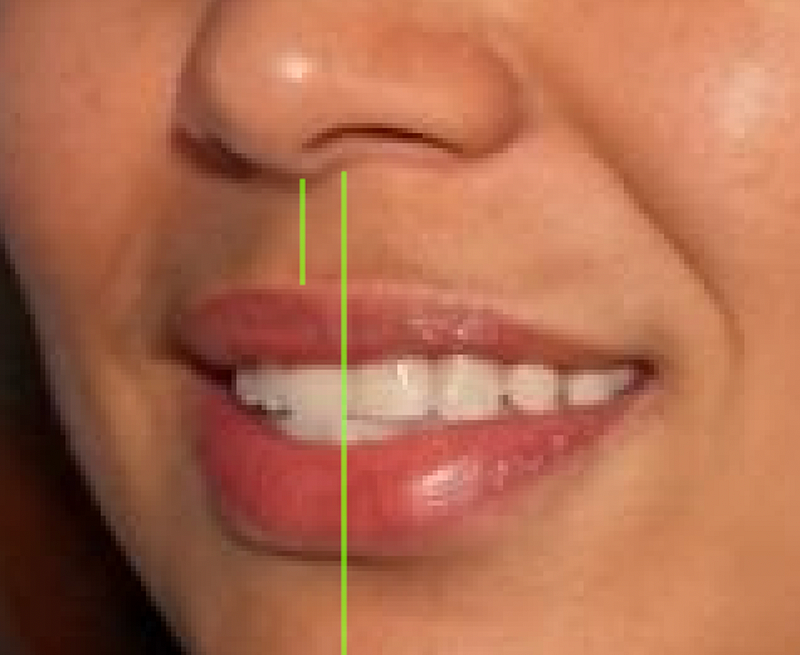
Ahcik’s 12,200 followers come from a variety of backgrounds, including the Ankara Bureau Chief at Daily Sabah, the 25th and 26th Term CHP Trabzon Deputy, and other lower level politicians such as an AK Party Esenler Council Member, an Iyi Party Aksu Municipality Council Member, a former MHP Pendik Municipality Council Member, and even an Iyi Party General Administrative Board Member. Her tweet was also reported on uncritically by Haberek and Ege Telgraf, a Turkish news site.
Ahcik Arat is not the only suspicious “Armenian” academic accounts created in the past two months. Forty minutes before Ahcik’s account made the tweet referring to her experiences in Turkey as an ethnic Armenian, Twitter user Semih Mahcupadis tweeted out the same text but instead described his move to Denmark. Some users and more than one online article have noted this strange duplication.
“Semih Mahcupadis”
The Semih Mahcupadis account claims to be affiliated with the sociology department at the esteemed Bogazici University and hold a PhD from Copenhagen Business School. However, his name does not appear on either university’s website. Semih Mahcupadis’ account is likely at least partially automated because he tweets an average of 110 tweets per day. Like Ahcik’s profile, Semih’s also attracted followers from a smattering of politicians such as an Iyi Party Istanbul Founding Board Member and the former vice president of the Grey Wolves organization.
On September 27, Semih Mahcupadis responded to a tweet from the editor of a popular Turkish-Armenian bilingual newspaper, Agos. The tweet attempted to discredit Agos editor Yetvart Danzikyan’s claim that Armenians fear that the war between Armenia and Azerbaijan could lead to violence against Armenian shops in Turkey. Semih’s tweet alleges that his market resides underneath a Grey Wolves office and “for 25 years he hasn’t had a problem.” The tweet accumulated 36,200 likes.
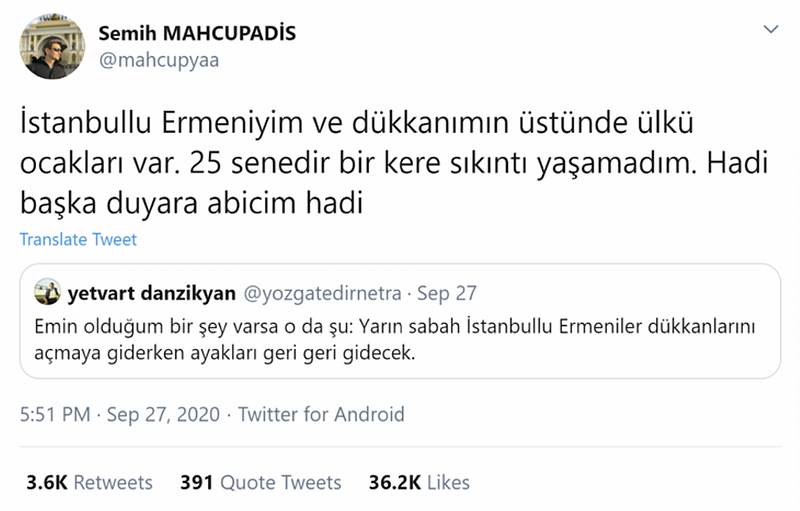


“Hrant Enveryan”
Yet another academic account espousing nationalist doctrine with an ambiguous Armenian identity is the Hrant Enveryan account. Hrant has both a Facebook and a Twitter account. On each platform he identifies as an “academic” and an Armenian but his account is unlike the others in that he claims to live in Turkey. One of his Facebook profiles states that he studied at Bogazici University. Another adds that he is an Armenian from Malatya. Hrant’s previous Twitter bio described him as an academic at Bogazici University but he has since deleted Bogazici University from his name opting for the more anonymous title of “academic”.
There is no online presence of a Hrant Enveryan in connection with Bogazici University, or any university for that matter. His profile picture is an image of the famous late Turkish-Armenian journalist Hrant Dink, affording him another layer of anonymous Armenian identity.
Yet, Enveryan‘s profile managed to reach a broad audience. His tweets made it into a Sabah article, a TRT World article, and a Middle East Eye article. Interestingly enough, TRT described Enveryan as a “parody/anonymous account” yet continued to embed two of his tweets while the Sabah article seemed to acknowledge him as a credible academic.
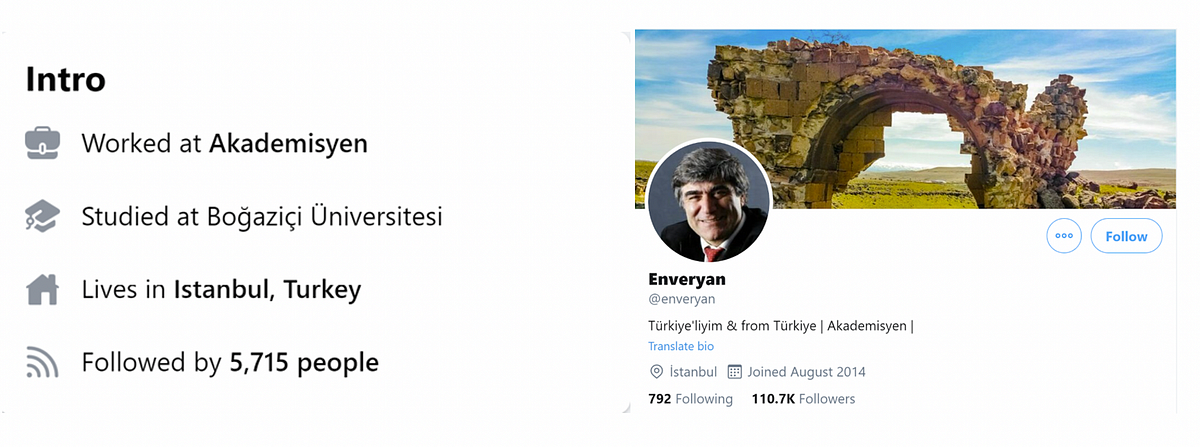
Although inauthentic accounts likely make up a tiny fraction of accounts in Turkish social media, they represent an interesting case study in media literacy among Turkish Twitter users, who have not only questioned the veracity of the claims made by these accounts, but also drawn attention to their suspicious identities, Turks took to the popular Urban Dictionary-esque website Eski Sozluk and created an easily searchable entry for two of them. The entries serve as a sort of forum to expose and discuss the users.
Follow along for more in-depth analysis from our #DigitalSherlocks.

